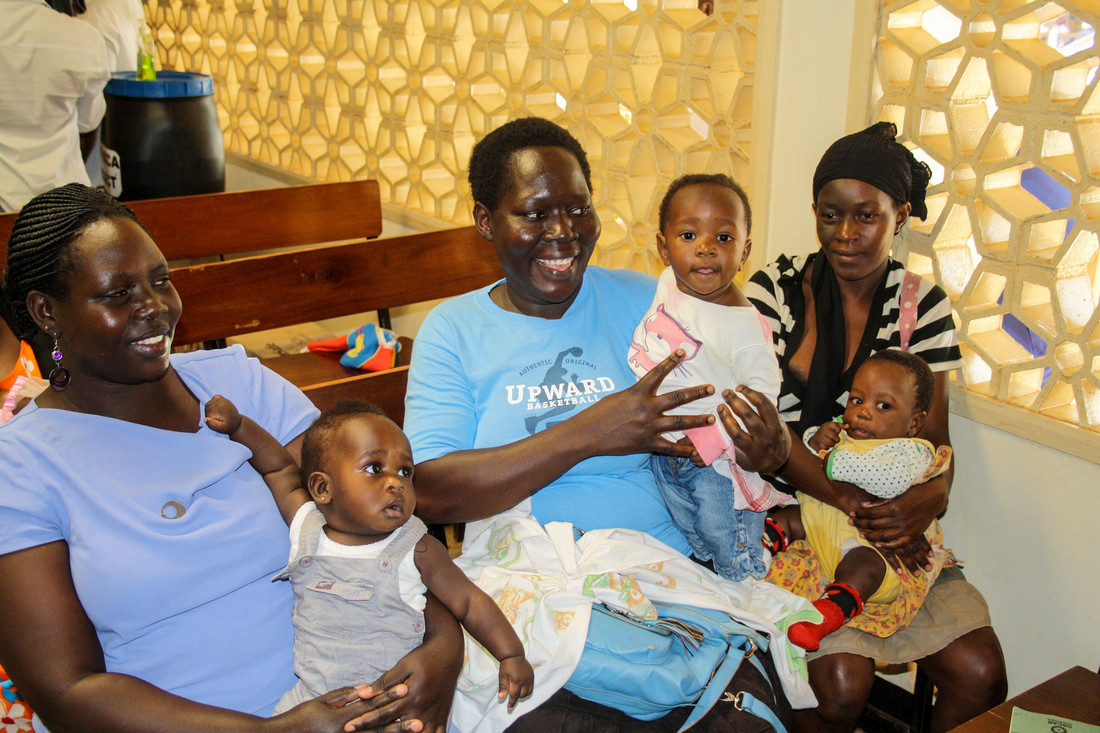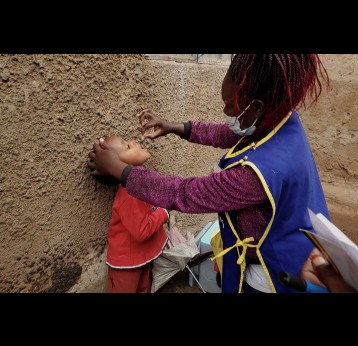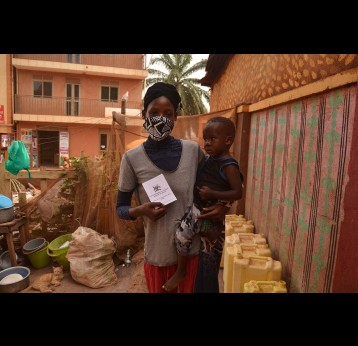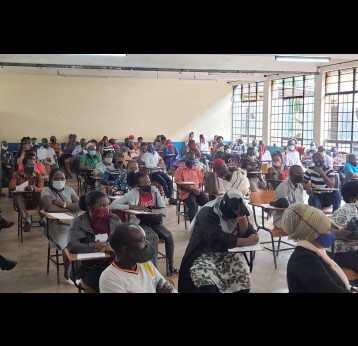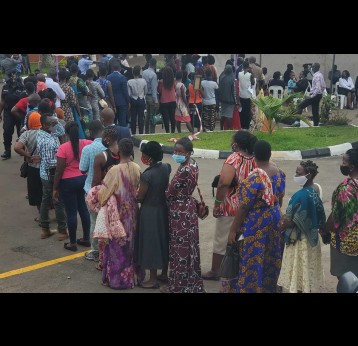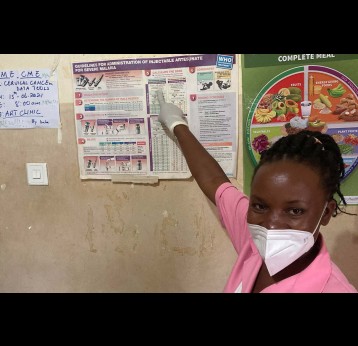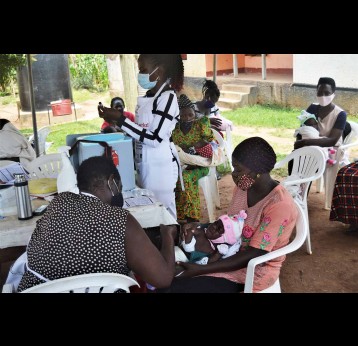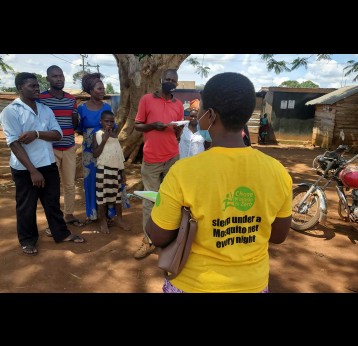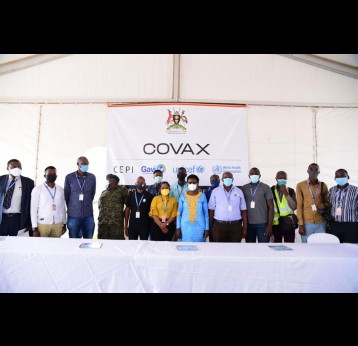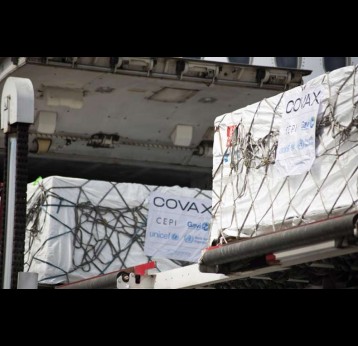Country Information
DTP3 / immunisation coverage
Grade of ConfidenceCommitments: Multi-year programme budgets endorsed in principle by the Gavi Board. These become financial commitments upon approval each year for the following calendar year.
Approvals: Total Approved for funding
Disclaimer: the boundaries and names shown and the designations used on this map do not imply the expression of any opinion whatsoever on the part of Gavi, the Vaccine Alliance concerning the legal status of any country, territory, city or area or of its authorities, or concerning the delimitation of its frontiers or boundaries. Dotted lines on maps represent approximate border lines for which there may not yet be full agreement.
This Gavi country data is made available under the Creative Commons BY 4.0 license: https://creativecommons.org/licenses/by/4.0/
Latest News
All News31 January 2022
Uganda’s door-to-door polio campaign targets unimmunised children
Uganda is working hard to ensure that all the gains made in the fight against polio aren’t lost to the pandemic.
4 January 2022
Uganda: Taking vaccines to the people
The country is on a major vaccination drive to ensure that people are protected and the economy can recover.
28 September 2021
COVAX vaccines lead drive to reopen Uganda’s schools
The Ugandan government is on a drive to vaccinate teachers to ensure the reopening of schools across the country.
3 August 2021
Refugees included in Uganda’s COVID-19 vaccine drive
Uganda is setting an example by including its estimated 1.4 million refugees in its COVID-19 vaccine programme, however there are still barriers to overcome.
26 July 2021
“I will definitely take the vaccine”: High demand for COVID-19 vaccines in Uganda
While there was some initial reluctance to get vaccinated against COVID-19 in Eastern Uganda, attitudes are changing fast.
19 July 2021
Keeping routine immunisation going during Uganda’s second lockdown
Despite a second lockdown, outreach initiatives ensure continuation of Uganda’s routine child immunisation.
20 May 2021
The community health workers getting people vaccinated in Uganda
As Community Health Workers, Harriet Nankwanzi and Yusuf Maganda have built personal relationships with people in their communities who have over the years relied on their services to access vital health information.
12 April 2021
Protecting Uganda’s overstretched health workers through COVAX
Over 50 health workers in Uganda have lost their lives to COVID-19 – a huge toll for a country with just 0.17 doctors per thousand people in some areas. With remaining health workers overworked and vulnerable, some relief has come in the form of…
Subscribe to our newsletter
Sources
| Name | Source | Date |
|---|---|---|
| Total population by country, by year, by age | United Nations, United Nations, Department of Economic and Social Affairs, Population Division. World Population Prospects. | 2019-07-31 |
| Total number of children surviving until 1 year old by country and by year | United Nations, United Nations, Department of Economic and Social Affairs, Population Division. World Population Prospects. | 2019-07-31 |
| UN Life births per gender | United Nations, United Nations, Department of Economic and Social Affairs, Population Division. World Population Prospects. | 2019-07-31 |
| Under-five mortality rate by country and by year | UNICEF CME Info http://www.childmortality.org/, Level & Trends in Child Mortality. Estimates Developed by the UN Inter-agency Group for Child Mortality Estimation (UNICEF, WHO, World Bank, UN DESA, UNPD). | 2020-09-01 |
| Infant mortality rate by country and by year | United Nations, United Nations, Department of Economic and Social Affairs, Population Division. World Population Prospects. | 2020-09-01 |
| GNI per capita, Atlas method (current US$) | World Bank, The gross national income, converted to U.S. dollars using the World Bank Atlas method, divided by the midyear population | 2021-07-01 |
| Antigen Coverage (%) by country and by year | WHO/UNICEF, Coverage refers to the number of administered doses divided by the number of eligible children to receive that vaccine. | 2021-07-15 |
| Percentage of districts with >=80% DTP3 coverage | WHO, Joint Reporting Form (JRF) | 2021-07-15 |
| Percentage of districts with <50% DTP3 coverage | WHO, Joint Reporting Form (JRF) | 2021-07-15 |
| Total Disbursed - Finance Disbursement | GAVI, Access software for Finance (in USD) | 2019-09-17 |
Grade of Confidence (GoC): The WHO and UNICEF estimates of national immunisation coverage (wuenic) are based on data and information that are of varying, and, in some instances, unknown quality. Beginning with the 2011 revision WHO/UNICEF describe their grade of confidence (GoC) in these estimates. As there is no underlying probability model upon which the estimates are based, WHO/UNICEF are unable to present classical measures of uncertainty, e.g., confidence intervals. Moreover, WHO/UNICEF have chosen not to make subjective estimates of plausibility/certainty ranges around the coverage. The GoC reflects the degree of empirical support upon which the estimates are based. It is not a judgment of the quality of data reported by national authorities.
|
Explanation of GoC values: |
|
| *** |
Estimate is supported by reported data [R+], coverage recalculated with an independent denominator from the World Population Prospects from the UN Population Division (D+), and at least one supporting survey within 2 years [S+]. While well supported, the estimate still carries a risk of being wrong. |
| ** | Estimate is supported by at least one data source; [R+], [S+], or [D+]; and no data source, [R-], [D-], or [S-], challenges the estimate. |
| * | There are no directly supporting data; or data from at least one source; [R-], [D-], [S-]; challenge the estimate. |

